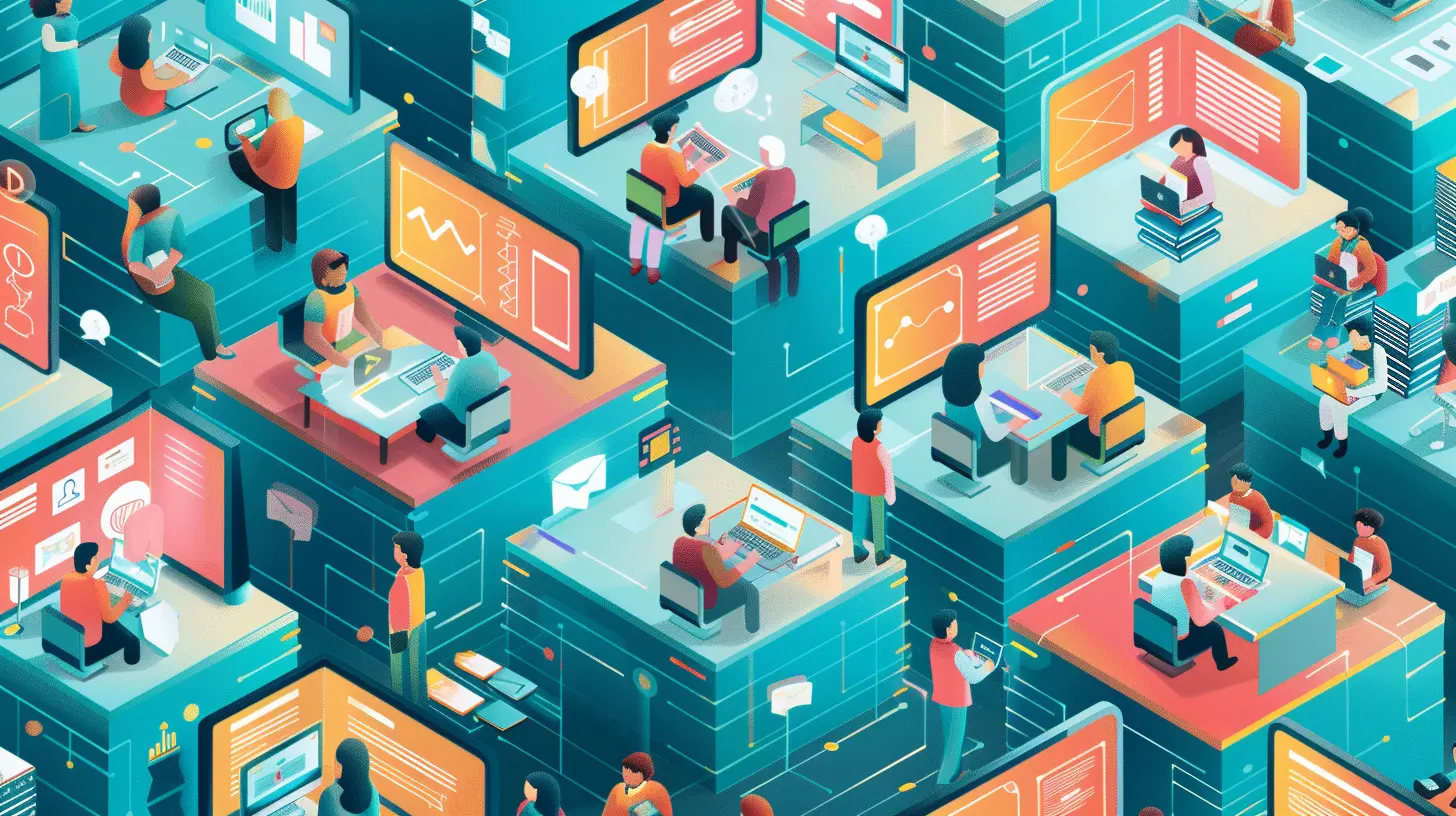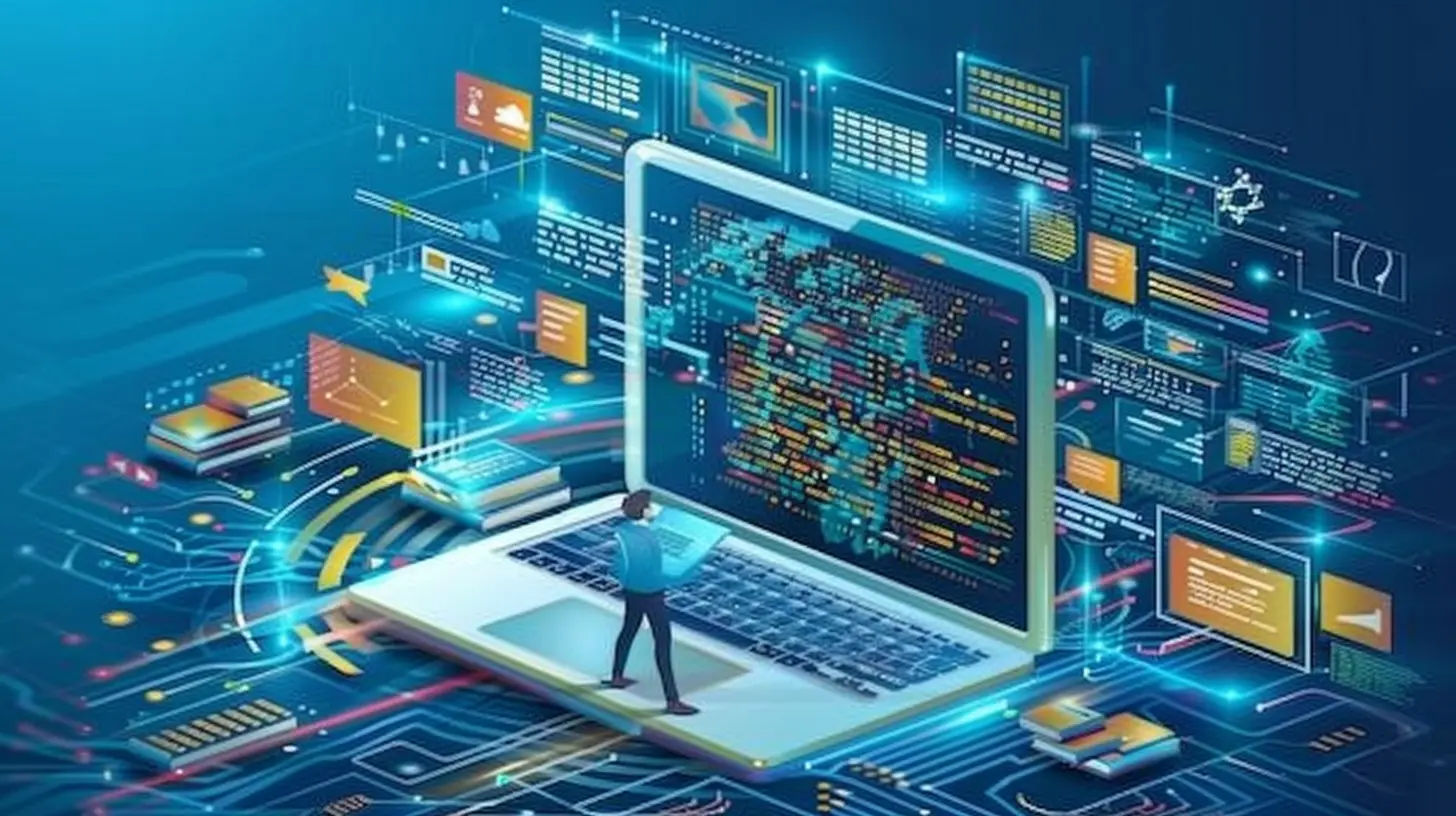Building Digital Literacy Through Virtual Classrooms
7 July 2025
In today’s fast-paced, tech-driven world, digital literacy has become as essential as reading and writing. But when you hear the term "digital literacy," what comes to mind? Is it knowing how to use a computer, navigate the internet, or create a social media post? Well, it's all that and much more.
Virtual classrooms have redefined how we approach education, and they’re playing a key role in building digital literacy for students and educators alike. It's no longer just about memorizing facts; it's about learning how to thrive in a digital-first environment. So, how exactly are virtual classrooms contributing to digital literacy? Let’s dive in!

What is Digital Literacy?
Before we jump into the nitty-gritty of virtual classrooms, let’s take a moment to define digital literacy. Simply put, digital literacy is the ability to effectively and critically navigate, evaluate, and create information using digital technologies. It’s about knowing how to use a computer, yes—but it’s also about understanding how to find reliable information online, protect your privacy, communicate effectively, and even create digital content.In short, digital literacy is the skill set necessary to live, learn, and work in a society where communication and access to information are increasingly reliant on digital technologies. And let’s face it, that’s pretty much the world we live in.
Why is Digital Literacy Important?
Think of digital literacy like learning how to swim. You wouldn’t jump into the deep end of a pool without knowing how to swim, right? Similarly, in our tech-heavy world, you need digital literacy to navigate the vast ocean of information at your fingertips.Without these skills, students may struggle to keep up with the demands of modern education and miss out on future job opportunities. In fact, many job roles today require some level of digital proficiency. From communication to problem-solving, digital literacy is the key to thriving in our interconnected world.

The Rise of Virtual Classrooms
Now that we’ve covered what digital literacy is, let’s talk about virtual classrooms. Virtual classrooms have been around for a while, but they really took off during the COVID-19 pandemic. With many schools shifting to online learning, virtual classrooms became the new norm almost overnight.But virtual classrooms aren’t just a temporary solution. They’ve proven to be flexible, scalable, and effective—so much so that many educational institutions are now adopting hybrid or fully online learning models. And as virtual classrooms become more mainstream, they’re offering students new opportunities to build their digital literacy skills.
What Makes Virtual Classrooms Different?
The traditional classroom setup—rows of desks, a chalkboard, and a teacher at the front of the room—is very different from a virtual one. In a virtual classroom, students and teachers interact through digital platforms, often using video conferencing tools, discussion boards, and digital resources.This shift inherently requires a higher level of digital literacy. Students need to know how to log into online platforms, submit assignments electronically, and collaborate with classmates using digital tools. The learning process is no longer confined to textbooks; it’s interactive, dynamic, and, most importantly, digital.

How Virtual Classrooms Build Digital Literacy
1. Exposure to Digital Tools
Virtual classrooms provide students with hands-on experience using digital tools. Whether it's a learning management system (LMS) like Google Classroom or a video conferencing tool like Zoom, students are regularly exposed to technology that they’ll likely encounter in the workforce.The more students use these tools, the more comfortable they become with them. It’s like learning to drive a car—the more you practice, the better you get. And once students are comfortable using these tools, they’re better equipped to navigate other digital platforms in the future.
2. Enhancing Research Skills
In a virtual classroom, the internet is your library. Students are often encouraged to conduct research online, which helps them develop critical thinking skills. But here’s the kicker: Not everything on the internet is credible or reliable, and students need to learn how to differentiate between trustworthy sources and questionable ones.Virtual classrooms teach students how to evaluate the credibility of online resources. They learn how to cross-reference information, spot misinformation, and use academic sources. In a world where fake news and misinformation are rampant, these skills are invaluable.
3. Encouraging Collaboration and Communication
Gone are the days when group projects meant meeting up at someone’s house. In virtual classrooms, collaboration happens online. Students use tools like Google Docs, Slack, or Microsoft Teams to work together on projects, and they often communicate through email or discussion forums.This digital collaboration helps students develop essential communication skills. They learn how to express themselves clearly and professionally in a digital environment—skills that are crucial in today’s workplace. Plus, these interactions often mimic real-world remote work scenarios, giving students a taste of what it’s like to work in a modern, digital workplace.
4. Boosting Creativity and Innovation
One of the coolest things about virtual classrooms is the creative freedom they offer. Instead of writing a traditional book report, students might be asked to create a video presentation, design a website, or develop a digital infographic. These types of assignments encourage students to think outside the box and use digital tools to showcase their creativity.By experimenting with different types of media and digital platforms, students not only build their digital literacy but also cultivate a sense of innovation. And let’s face it, in our ever-evolving digital landscape, the ability to think creatively and adapt to new technologies is a massive advantage.
5. Fostering Problem-Solving Skills
How many times have you Googled how to fix a tech issue? Probably more than you can count. In virtual classrooms, students often encounter technical challenges—whether it’s a slow internet connection, a software bug, or an issue with uploading an assignment.These challenges force students to troubleshoot and solve problems on their own. They learn how to search for solutions online, ask for help from peers, or contact tech support. This fosters resilience and problem-solving skills, which are crucial for navigating the digital world.

The Role of Educators in Promoting Digital Literacy
It’s not just students who need to build digital literacy—teachers play a huge role, too. Educators must be proficient in digital tools and platforms to provide effective instruction. But beyond that, they also need to teach students how to use technology responsibly and ethically.In virtual classrooms, teachers have the unique opportunity to model good digital habits. They can show students how to cite online sources properly, protect their personal information, and engage respectfully in online discussions. These lessons go beyond the subject matter—they’re life skills that will benefit students long after they leave the classroom.
The Importance of Digital Citizenship
Digital literacy isn’t just about knowing how to use technology—it’s about understanding how to use it responsibly. This is where the concept of digital citizenship comes in. Digital citizenship refers to the responsible use of technology and the internet, including understanding privacy, security, and ethical behavior online.In virtual classrooms, teachers can integrate lessons on digital citizenship into the curriculum. For example, they might discuss the implications of sharing personal information online, the importance of respecting others in digital spaces, or the potential dangers of cyberbullying. By teaching students to be good digital citizens, educators are helping them navigate the digital world safely and responsibly.
Challenges of Building Digital Literacy in Virtual Classrooms
Of course, building digital literacy in virtual classrooms isn’t without its challenges. Access to technology can be a significant barrier for some students, particularly those in low-income or rural areas. If students don’t have reliable internet access or appropriate devices, it can be difficult for them to participate fully in virtual learning.Additionally, not all students learn at the same pace when it comes to technology. Some may pick up new tools quickly, while others may struggle. Teachers need to be patient and provide differentiated support to ensure that all students can build their digital literacy skills.
Finally, there’s the issue of screen time. Spending too much time in front of a screen can lead to burnout, fatigue, and even physical health problems like eye strain. It’s important for teachers to strike a balance between digital and offline learning activities to keep students engaged and healthy.
The Future of Digital Literacy and Virtual Classrooms
As technology continues to advance, the importance of digital literacy will only grow. Virtual classrooms are likely here to stay in some capacity, whether through hybrid models or fully online programs. This means that students will continue to have opportunities to build their digital literacy skills in meaningful ways.But it’s not just about learning how to use the latest tech tools. It’s about developing a mindset that embraces change, creativity, and critical thinking. In a world where new technologies emerge almost daily, the ability to adapt and learn is perhaps the most important skill of all.
So, whether you’re a student, teacher, or lifelong learner, the time to build your digital literacy is now. After all, the digital world isn’t going anywhere—and the more literate we are in it, the better prepared we’ll be for the future.
all images in this post were generated using AI tools
Category:
Virtual ClassroomsAuthor:

Olivia Chapman
Discussion
rate this article
1 comments
Edith McCloud
Thank you for this insightful article! I appreciate how it highlights the importance of digital literacy in virtual classrooms. As technology continues to evolve, equipping students with these skills will undoubtedly empower them to navigate the digital world more effectively. Great job!
July 17, 2025 at 3:23 AM

Olivia Chapman
Thank you for your kind words! I'm glad you found the article helpful in emphasizing the crucial role of digital literacy in education.


